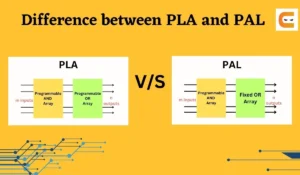In the rapidly evolving world of technology, the need for efficient and flexible data communication interfaces has become paramount. One such interface that has revolutionized how devices connect and communicate is the Universal Serial Bus, more commonly known as USB.
At the same time, Field-Programmable Gate Arrays (FPGAs) have emerged as powerful programmable devices capable of implementing complex digital systems. Combining the versatility of FPGAs with the ubiquity of USB has opened up many possibilities for various applications.
Understanding the Need for FPGA-USB Communication:
Custom digital logic circuits can be made using FPGAs, which are programmable integrated circuits. They have the capacity to process data in real time, offer high-speed parallel processing, and are adaptable to changing requirements.
For connecting devices and transferring data, on the other hand, USB is a widely used standard. To connect peripherals to computers and other devices, it offers a simple, standardized method.
FPGA-based systems and USB-enabled gadgets including computers, laptops, and embedded systems may communicate with one another without any interruptions thanks to the integration of FPGA and USB.
This makes it possible for a variety of applications that need fast data transfer, real-time processing, and control skills.
Benefits and Applications of FPGA-USB Interfaces:
High-Speed Data Transfer: FPGA-USB interfaces can achieve fast data transfer rates, making them suitable for applications that require real-time data processing, such as high-performance data acquisition systems, digital signal processing, and real-time control systems.
Customizability and Flexibility: FPGAs offer the advantage of reconfigurability, allowing developers to implement custom USB interfaces tailored to specific application requirements. This flexibility makes FPGA-USB interfaces ideal for applications where standard USB protocols may not suffice.
Real-Time Processing: FPGAs excel in parallel processing and can perform complex computations in real time. By integrating FPGA-USB interfaces, developers can leverage the FPGA’s computational power for real-time data analysis, encryption, and other computationally intensive tasks.
System Integration: FPGA-USB interfaces facilitate easy integration of FPGA-based systems with existing USB-enabled devices and systems. This enables seamless communication and data exchange between FPGA-based peripherals and host devices.
Embedded Systems and IoT Applications: FPGA-USB interfaces find applications in embedded systems and Internet of Things (IoT) devices. They can be used to create USB-based sensor interfaces, data loggers, industrial control systems, and IoT gateways
Implementing USB on an FPGA:
Implementing USB functionality on an FPGA involves several steps:
Choosing an Appropriate USB IP Core: Selecting a suitable USB Intellectual Property (IP) core is crucial. Several vendors provide USB IP cores that comply with USB standards and protocols. The chosen IP core should match the desired USB version and feature set.
Configuring the USB IP Core: Once the IP core is selected, it needs to be configured based on the specific requirements of the application. Configuration parameters may include endpoint configurations, buffer sizes, and supported USB classes.
Design Considerations: Designing the FPGA-USB interface requires careful consideration of hardware connections, signal integrity, and timing constraints. It involves mapping the USB signals to appropriate FPGA pins and ensuring proper electrical and timing characteristics.
USB Enumeration: USB devices undergo an enumeration process when connected to a host device. During enumeration, the device communicates its capabilities and characteristics to the host. Implementing USB enumeration on the FPGA involves handling enumeration requests and responding with the appropriate descriptors and configurations.
Data Transfer: After enumeration, the FPGA can communicate with the USB host/device using USB endpoints. Bulk, control, interrupt, and isochronous transfer modes can be utilized based on the specific data transfer requirements.
Debugging and Testing FPGA-USB Interfaces:
Debugging and testing FPGA-USB interfaces can be challenging due to the complexity of the system. Here are some common practices for effective debugging:
Functional Testing: Test the FPGA-USB interface for basic functionality by performing simple data transfer operations and verifying that the FPGA and USB device/host can successfully communicate.
Signal Integrity Analysis: Use oscilloscopes or logic analyzers to analyze the signals on the FPGA-USB interface. Check for proper signal levels, timing violations, noise, and crosstalk issues that may affect communication.
USB Protocol Analysis: USB protocol analyzers can be helpful in capturing and analyzing the USB data packets exchanged between the FPGA and USB host/device. This helps identify any protocol errors, packet loss, or timing issues that may be causing communication problems.
Debugging Tools: Utilize software tools and debuggers provided by the FPGA development environment to monitor and troubleshoot the FPGA-USB interface. These tools can assist in identifying and resolving issues related to configuration, enumeration, and data transfer.
Firmware and Hardware Debugging: If issues persist, review the FPGA firmware and hardware design for any potential errors or misconfigurations. Verify that the USB IP core is properly instantiated and configured, and check for any incorrect connections or timing constraint violations.
FPGA-USB Applications and Examples:
FPGA-Based USB Peripherals: FPGAs can be used to implement custom USB peripherals such as high-speed data acquisition modules, digital audio interfaces, video capture devices, and custom input/output controllers.
Data Acquisition and Control Systems: FPGA-USB interfaces are well-suited for data acquisition and control applications where high-speed data transfer and real-time processing are required. Examples include industrial automation, scientific research, and test and measurement systems.
Embedded Systems and IoT Applications: FPGAs integrated with USB enable the creation of USB-enabled embedded systems and IoT devices. This includes USB-based sensor interfaces, smart home automation systems, IoT gateways, and industrial monitoring and control systems.
FPGA-USB Development Platforms: FPGA development boards with built-in USB interfaces provide a convenient platform for prototyping and developing FPGA-USB applications. These platforms often come with pre-designed reference designs and software libraries to accelerate development.
Future Trends and Advancements:
USB4: The emergence of USB4, the latest USB specification, brings higher data transfer speeds and enhanced capabilities. FPGA-USB communication is expected to benefit from USB4’s increased bandwidth and improved protocol efficiency.
FPGA-USB in Edge Computing: As edge computing becomes more prevalent, FPGA-USB integration can play a vital role in enabling high-performance, low-latency data processing and communication at the edge of the network.
AI and Machine Learning: FPGAs, with their parallel processing capabilities, are well-suited for AI and machine learning applications. Integrating FPGA-USB interfaces can facilitate high-speed data exchange between the FPGA and AI systems, enabling efficient model inference and real-time decision-making.
Conclusion:
FPGA-USB communication offers numerous benefits and opens up a wide range of applications in various industries. The combination of FPGA’s reconfigurability and USB’s standardized connectivity provides a powerful platform for high-speed data transfer, real-time processing, and system integration. As technology advances, we can expect further advancements and innovations in FPGA-USB interfaces, enabling new possibilities in fields such as embedded systems, IoT, data acquisition, and control systems.


![What is FPGA Introduction to FPGA Basics [2023] computer-chip-dark-background-with-word-intel-it](https://fpgainsights.com/wp-content/uploads/2023/06/computer-chip-dark-background-with-word-intel-it-300x171.jpg)









